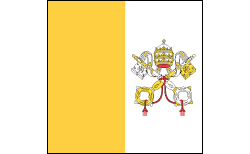Vatican City (Holy See) History


Pope John Paul II Brings the Vatican Into the Modern Age
On May 13, 1981, a Turkish terrorist shot the pope in St. Peter's Square, the first assassination attempt against the pontiff in modern times. The pope later met and forgave him. On June 3, 1985, the Vatican and Italy ratified a new church-state treaty, known as a concordat, replacing the Lateran Treaty of 1929. The new accord affirmed the independence of Vatican City but ended a number of privileges that the Catholic Church had in Italy, including its status as the state religion.
On April 2, 2005, John Paul died. He was the third-longest reigning pope (26 years). A champion of the poor, he is credited by many with hastening the fall of Communism in Poland and other eastern bloc countries. His vitality and charisma energized the world's 1 billion Catholics. His rule was characterized by conservatism regarding church doctrine, particularly on issues such as birth control, women's roles in the church, and homosexuality. The pope also remained circumspect about the U.S. church's sexual abuse scandals in 2002. He was the Vatican's greatest ambassador, traveling to 129 countries. John Paul canonized 482 saints and beatified 1,338 people, which was believed to be more than all his predecessors combined.
On April 19, German cardinal Joseph Ratzinger was named the new pope. Pope Benedict XVI is known as an accomplished scholar of theology and is considered an archconservative in his religious views. He served as Pope John Paul II's closest associate and is expected to continue the policy of a “strong Rome.” In Sept. 2006, Pope Benedict XVI apologized after angering Muslims around the world by quoting medieval passages that referred to Islam as “evil and inhuman.”







